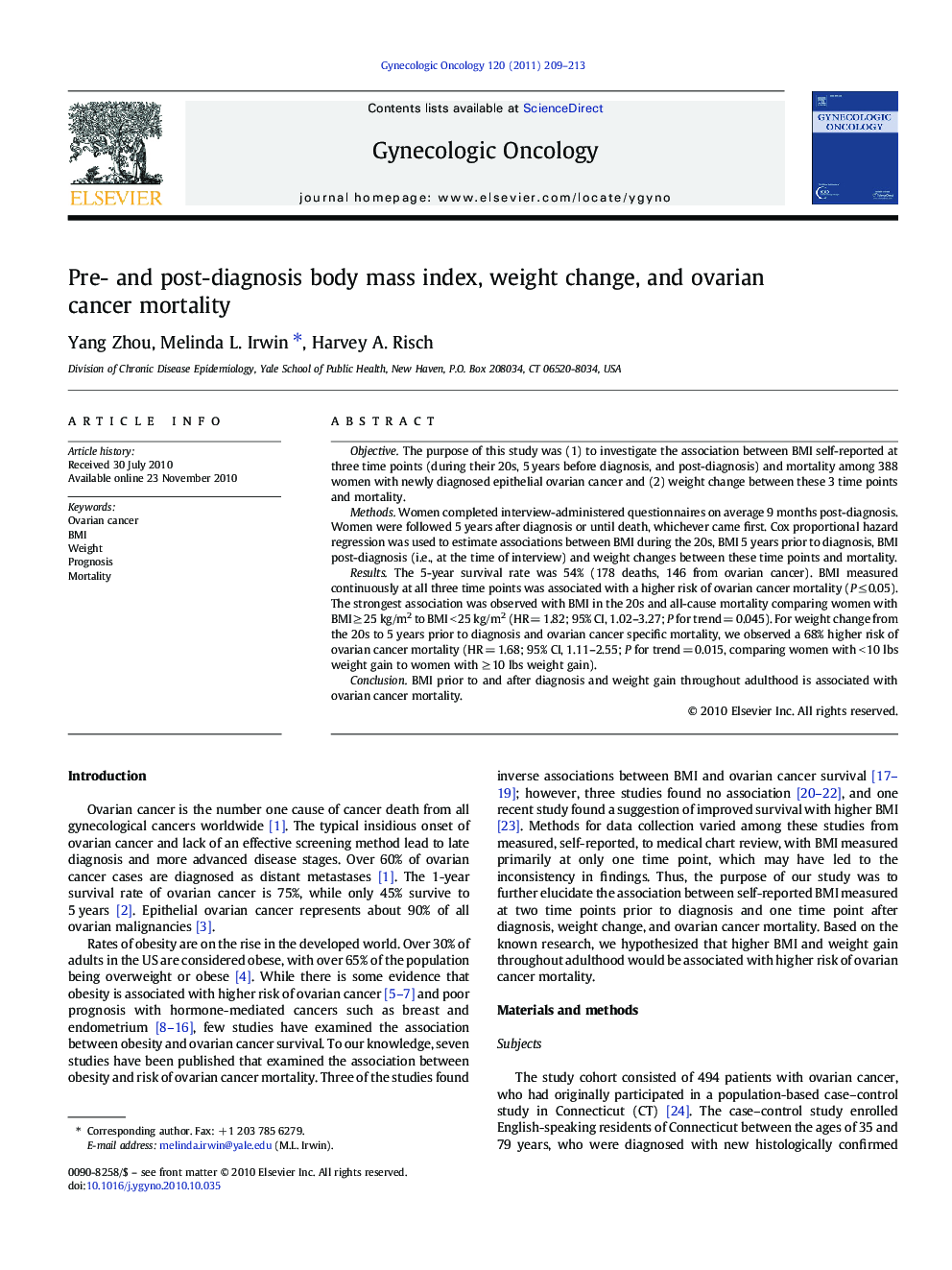| Article ID | Journal | Published Year | Pages | File Type |
|---|---|---|---|---|
| 6184772 | Gynecologic Oncology | 2011 | 5 Pages |
ObjectiveThe purpose of this study was (1) to investigate the association between BMI self-reported at three time points (during their 20s, 5 years before diagnosis, and post-diagnosis) and mortality among 388 women with newly diagnosed epithelial ovarian cancer and (2) weight change between these 3 time points and mortality.MethodsWomen completed interview-administered questionnaires on average 9 months post-diagnosis. Women were followed 5 years after diagnosis or until death, whichever came first. Cox proportional hazard regression was used to estimate associations between BMI during the 20s, BMI 5 years prior to diagnosis, BMI post-diagnosis (i.e., at the time of interview) and weight changes between these time points and mortality.ResultsThe 5-year survival rate was 54% (178 deaths, 146 from ovarian cancer). BMI measured continuously at all three time points was associated with a higher risk of ovarian cancer mortality (P â¤Â 0.05). The strongest association was observed with BMI in the 20s and all-cause mortality comparing women with BMI â¥Â 25 kg/m2 to BMI < 25 kg/m2 (HR = 1.82; 95% CI, 1.02-3.27; P for trend = 0.045). For weight change from the 20s to 5 years prior to diagnosis and ovarian cancer specific mortality, we observed a 68% higher risk of ovarian cancer mortality (HR = 1.68; 95% CI, 1.11-2.55; P for trend = 0.015, comparing women with < 10 lbs weight gain to women with â¥Â 10 lbs weight gain).ConclusionBMI prior to and after diagnosis and weight gain throughout adulthood is associated with ovarian cancer mortality.
Research HighlightsâºBMI in adulthood is associated with higher risk of ovarian cancer death. âºPost-diagnosis BMI is associated with higher risk of ovarian cancer death. âºWeight gain in adulthood is associated with higher risk of ovarian cancer death.
